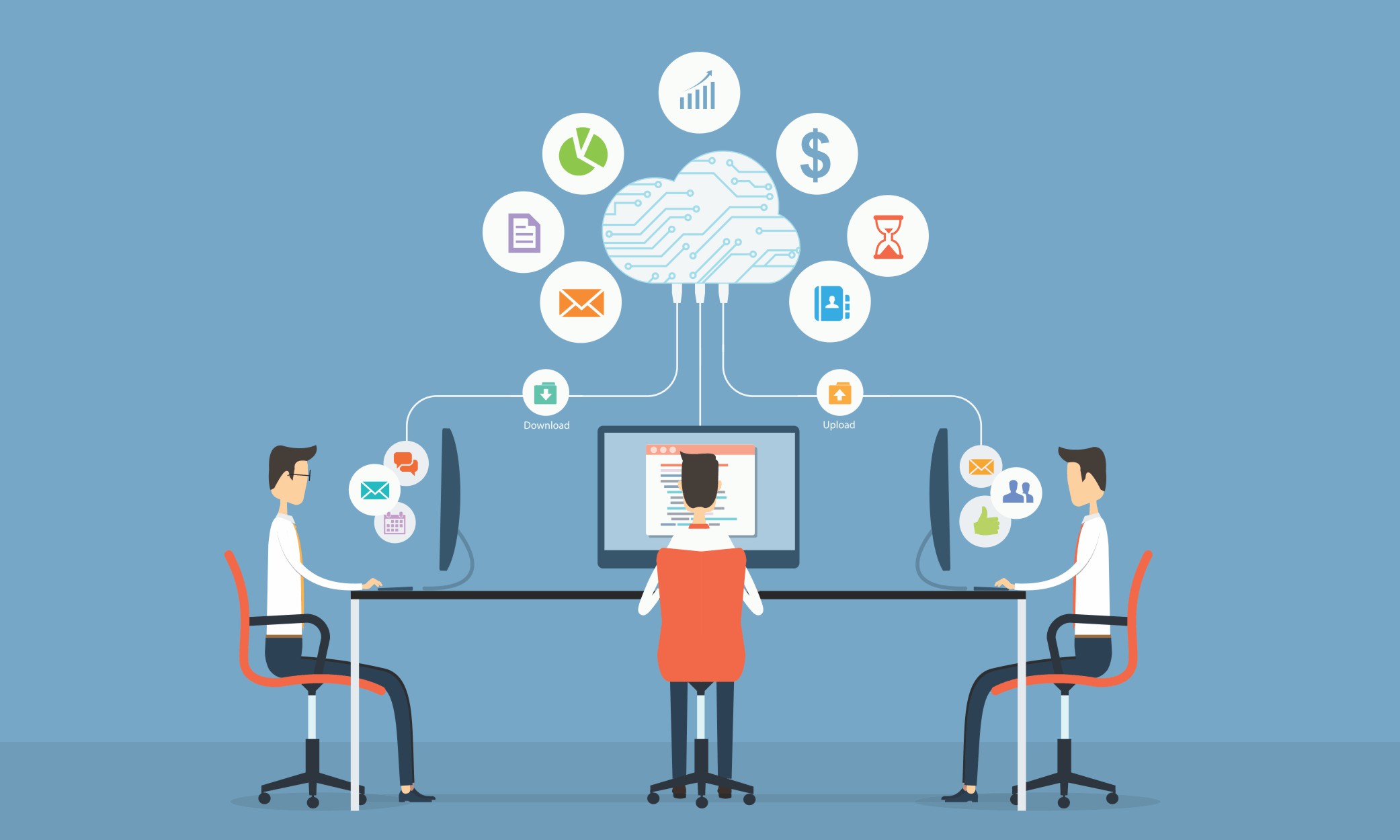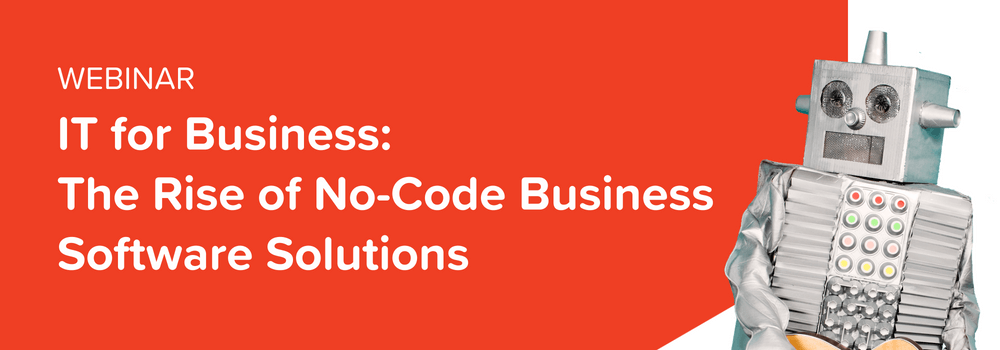Enterprises moving at the speed of innovation can't wait around for lengthy application development if they expect to exceed their customers' expectations.
The no-code/low-code rapid application movement is creating a new kind of business stakeholder: the citizen developer. While these users have intimate knowledge of specific process challenges weighing their company down, they may lack the coding expertise to build what they need.
With no-code/low-code tools, business users' visions can take shape quickly within a safe, IT-governed environment.
Digital transformation and this real-time collaboration between IT and business users were persistent themes at Cloud Expo in NYC earlier this month.
To understand more what this means for the enterprise, we asked Intellyx president Jason Bloomberg.
Kintone: Tell us a bit about Intellyx and how you got involved in the no-code, low-code movement.
JB: Intellyx is an industry analyst firm focused on agile digital transformation, which means that we focus on the problem space more than a particular technology area to help that digital professional understand all the different trends and enterprise IT put together. One of these important trends is the low-code, no-code movement.
Kintone: You've penned several Forbes articles about the rise of the citizen developer and how it's pushing shadow IT aside. How did this all evolve? Why in the last year or two has it really exploded?
JB: Ten, 15 years ago, back when I was at ZapThink, we worked with a number of vendors who were trying to do the same kind of thing. You may remember TenFold, or Wakesoft, or Web Putty. None of these companies exist any more, because it was really too hard a problem at that point in time to build a set of modular tools for assembling applications. There just wasn't enough maturity in the underlying technology to support this kind of capability.
That's really changed now, because we have deeper technology. The vendors in this space, whether it's Kintone or OutSystems or QuickBase or some of the others, they're building platforms that have a variety of underlying capabilities that support the ability for now business users or other people to create applications by assembling modular components in a way that provides much greater flexibility for the business user. The platforms themselves take care of security, take care of integration, take care of a lot of the heavy lifting under the covers. That's the hard part. Building these platforms is difficult. Making it easy to assemble applications, that's a difficult challenge.
RELATED: How to Select the Best Low-Code App Platform for Your Team, Department or Enterprise
Kintone: Who are these no-code, low-code applications for?
JB: You said low-code and no-code, and actually that indicates rather a spectrum of capability. You look at OutSystems, and they're more of a low-coded platform. That is, their platform is for developers who are building applications, and it helps them build them more quickly. For instance, with OutSystems, if you have a web-based app, you can essentially push a button and generate the mobile equivalent. It's very straightforward for the developer, but it's aimed at that developer audience.
At the other extreme would be QuickBase. It used to be part of Intuit, but now they're independent. Their citizen developers are typically business users with no coding experience whatsoever. QuickBase gives them a lot of these modular components, like form elements and workflow elements and graphical elements; it's really just a drag-and-drop environment. You can build reasonably powerful applications as well.
Kintone is more on the no-code side with QuickBase than the low-code, or what we used to call rapid application development, which is where OutSystems fits in.
Kintone: What kind of applications are people building on these platforms?
JB: They could be any kind of enterprise-class applications. There's a lot of workflow products, or timesheet products, or project management applications. Really, the sky's the limit in terms of the capabilities that you can build.
One way of thinking of it is to understand that if you don't have this kind of tool, what are you going to use? Typically the fall back is emailing Excel files around.
Excel's a powerful application, but it's not very collaborative and it's difficult to manage workflows with it. Email, as well, is the standard collaboration tool of choice, but it's hard to manage sequences of events and, again, it's difficult to collaborate with a group of people. We've all had our horror stories with the "reply all," right? There's only so much you can do with "reply all" in email. A lot of these low-code and no-code tools, or platforms, are enabling business users to build applications that are better than emailing Excel files around.
Kintone: Where do you see things going in the next couple years with this movement?
JB: The trend is for more powerful capabilities that require less and less coding. Even with some of the no-code platforms, there's still a role for code. If you want to do some sort of custom business logic, you may have to drop into JavaScript, something like that. If you look at ServiceNow, for example, they have a number of pre-built and service management applications, but they're also low-code platforms for building custom applications. Again, it typically requires some level of JavaScript skills.
I would say that over time, there's going to be more and more capabilities that you can attain from these kinds of platforms without even a little bit of JavaScript frame as we can build more and more capabilities. They are enterprise-class capabilities: Legacy integration, sophisticated security and governance, and the ability to audit not just the applications themselves, but who's building them and who's changing them. We have this ability to support the citizen developer, citizen integrater, in an enterprise environment.
Now we have the self-service notion of application creation, but still within the context of secure and governed environments. IT is stepping up to the plate and supporting this as a way of empowering business users, but still maintaining the security governance and access to systems records, which are really the core duties of the transformed IT organization.
ALSO READ: Digital Disruption Forging New Breed of Superhero Process Excellence & IT Professionals
Kintone: In a recent report, Forrester said by 2020, the IT department could be almost entirely disassembled. Any thoughts on that?
JB: I think it's really more that it's an ongoing process of transformation. You may not recognize the IT department and it may be called something else, but it's an ongoing process of transformation rather than one day we wake up and we don't have an IT department. It's not going to be sudden. This has been going on for many years. It was data processing, then it was MIS, and then it was IT, and it's been evolving for many years.
The real shift that's happening today is the shift from IT as gatekeeper to IT as enabler. For many years, basically, the pattern was that the business wanted all this capability, but IT had to lock down what they supported; supporting applications was difficult, expensive, and there were all these security and governance issues. IT would essentially have an approved list of applications that the business could use, and a line of business executives felt overly constrained and would go around IT. That lead to the shadow IT problem.
We can't afford that any more. The organizations aren't supporting that role for IT. IT has to be an enabler of self-service capabilities. We still want IT to make sure things are secure and governed, but without limiting the ability of the business to do what it needs to do. That's a whole new way of thinking about IT that is transforming traditional IT to support this digitally-enabled, end-to-end, self-service model.
About the Author
Nicole is Director of Marketing at Kintone, with 10+ years experience in content strategy, campaign management, lead acquisition and building positive work cultures of empowered, purpose-driven team members. She spent seven years as a journalist, previously serving as a CBS San Francisco digital producer, NPR contributor, Patagon Journal deputy editor and reporter for several publications, including the Chicago Tribune. She's passionate about the tech for good space, social entrepreneurship and women leadership. On the weekends, you’ll likely find her putting her Master Gardener skills to use in at community gardens in Oakland.












